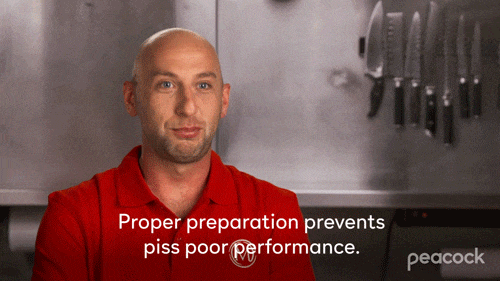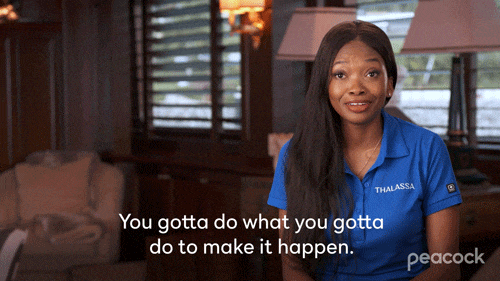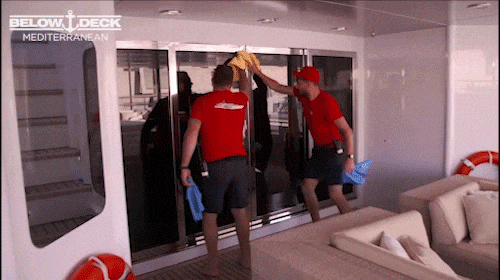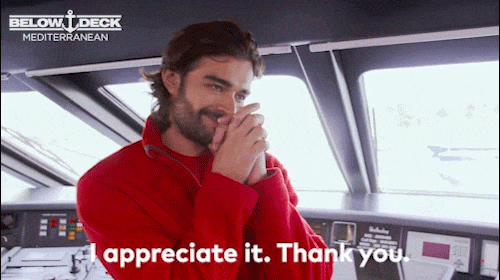8 Lessons in Team Collaboration We Learned from Below Deck

Team collaboration tips from the high seas
Team collaboration means working efficiently alongside your colleagues and occasionally external stakeholders on a project. It requires clear communication, creative thinking, and cooperation in order to achieve a common goal. Successful team collaboration also means equal contribution–no social loafing here!
Collaborating productively with a big team isn’t always easy, especially if your team is hybrid or fully remote. Asynchronous collaboration can be even trickier. Luckily, there are a few key strategies to aid successful cross-departmental team collaboration. And who better to teach us these skills than the superyacht stars of high-sea teamwork–the yachties themselves! Without further ado, Collato presents: How to collaborate effectively as a team, brought to you by the Below Deck crew.
Lesson 1: Prep, prep, prep

Nothing throws off a charter more than unprepared crew members. Disaster strikes when Chef Rachel forgets to order the $800 Beluga caviar, and Chief Stew Kate is in a tizzy when she can’t find the primary guest’s requested Don Julio Tequila. A lack of proper preparation will throw any project into chaos, and team collaboration quickly turns into confusion and blame-throwing. You might end up needing other team members to have your back, so it’s crucial to have a communication plan in place before even beginning a project. Put together a list of all tools, assets, documents, and anything else required well ahead of any deadlines. For successful team collaboration, it’s crucial to make sure everyone is aware of what’s needed and who is responsible in order to avoid any mishaps down the road.
Lesson 2: Get organized

Once you’ve prepped the team on what’s expected and you’ve got a plan in place, it’s time to get organized. Being properly organized before a charter–ahem, project–is critical for effective team collaboration. Every chief stew has his or her pages-long checklist of jobs to be done before guests arrive. The same level of detail and organization is necessary for the success of a marketing campaign. Take the time to map out every step of your campaign or project with teammates well in advance, and be sure each task is outlined in detail with clearly assigned responsibilities. It’s extremely important to check if any stakeholders outside of your team might be needed–just like the bosun will end up having to take the tender out to pick up the forgotten provisions. Involve any designers, freelancers, developers, etc., as early as possible to ensure they have enough time to help you.
Lesson 3: Flexibility is key

It’s not always smooth sailing: Even if you’ve done all the prep work and organized every detail, things don’t always go to plan. Adaptability is a skill necessary for any successful team collaboration. Your coworkers will inevitably have other priorities and may not be able to provide you with exactly what you’re asking for when you need it. Don’t end up in hot water; have a plan B, C, and D for when plan A falls apart. When you’re working with other teams and departments, staying flexible will keep your project on track even when things go awry.
Lesson 4: Respect your coworkers’ time

Respecting your colleagues’ time is paramount to productive team collaboration–and just being a good coworker in general. Nothing riled up Eddie more in Season 8 than when he caught deckhand Shane taking a nap while everyone else was cleaning the boat, and Chief Stew Francesca was livid when she caught her second stew Liz chatting up a deckhand instead of helping out with the dishes. Back on land, respecting your crew’s time means making sure you give people ample time to do their tasks–that means no last-minute “ASAP” requests. It goes the other way around, too: if you’re a stakeholder in a project, make sure everything is done on your end well before the due date to ensure that no one will be waiting on you when it’s go-time.
Lesson 5: Stay aligned with your crew

Any yachtie will tell you that staying aligned with your shipmate at all times makes for smooth sailing. Make sure you and your team check in with each other regularly so that you’re all on the same boat. Especially with remote work, it’s sometimes difficult to touch base with your colleagues and know what everyone is working on. Having regular stand-up meetings can help keep your crew aligned so that priorities are clear and communication between team members is frequent and straightforward.
Lesson 6: Breaks are a necessity

You can’t run a tight ship if your crew members are zombies from a lack of sleep and proper breaks. Like on the open sea, you and your team should take adequate breaks every day and finish work at a decent hour. Burnout is real, and you won’t be doing anyone a favor if you’re struggling to keep your head above water. If possible, see if you can time your breaks with your coworkers, so you can all come back refreshed and ready to work together at the same time.
Lesson 7: Keep it professional

Work doesn’t always have to be a drag—it can even feel like a vacation sometimes–but it’s always important to maintain some level of professionalism with your colleagues. The Below Deck crew members are always down to have a good time, but when they’re all together, they represent the boat even when they’re not in uniform. Captain Lee’s #1 rule, “Don’t embarrass yourself, and don’t embarrass the boat,” can be applied to any team setting. Have fun with your colleagues, but avoid getting three sheets to the wind and make sure you can show your face at the next Monday morning stand-up meeting.
Lesson 8: Say thank you

We’ve all got a job to do, but it doesn’t have to be thankless work. Yachties may work for tips, but a simple word of gratitude from a fellow crew member can go a long way. Make sure you thank your colleagues for their contributions to any project. Appreciation is the secret ingredient to motivation, and it might just be the key to any successful team collaboration.

